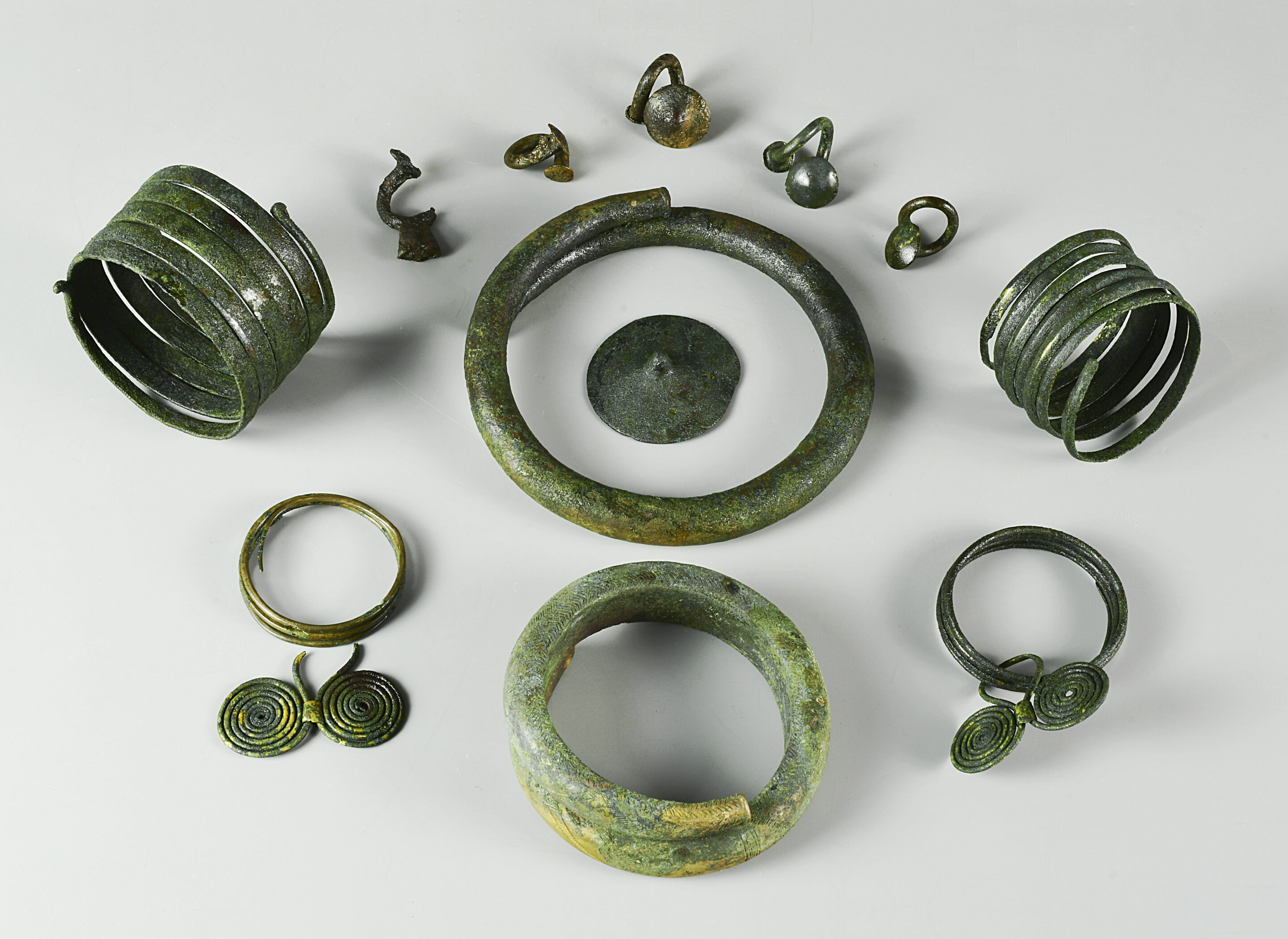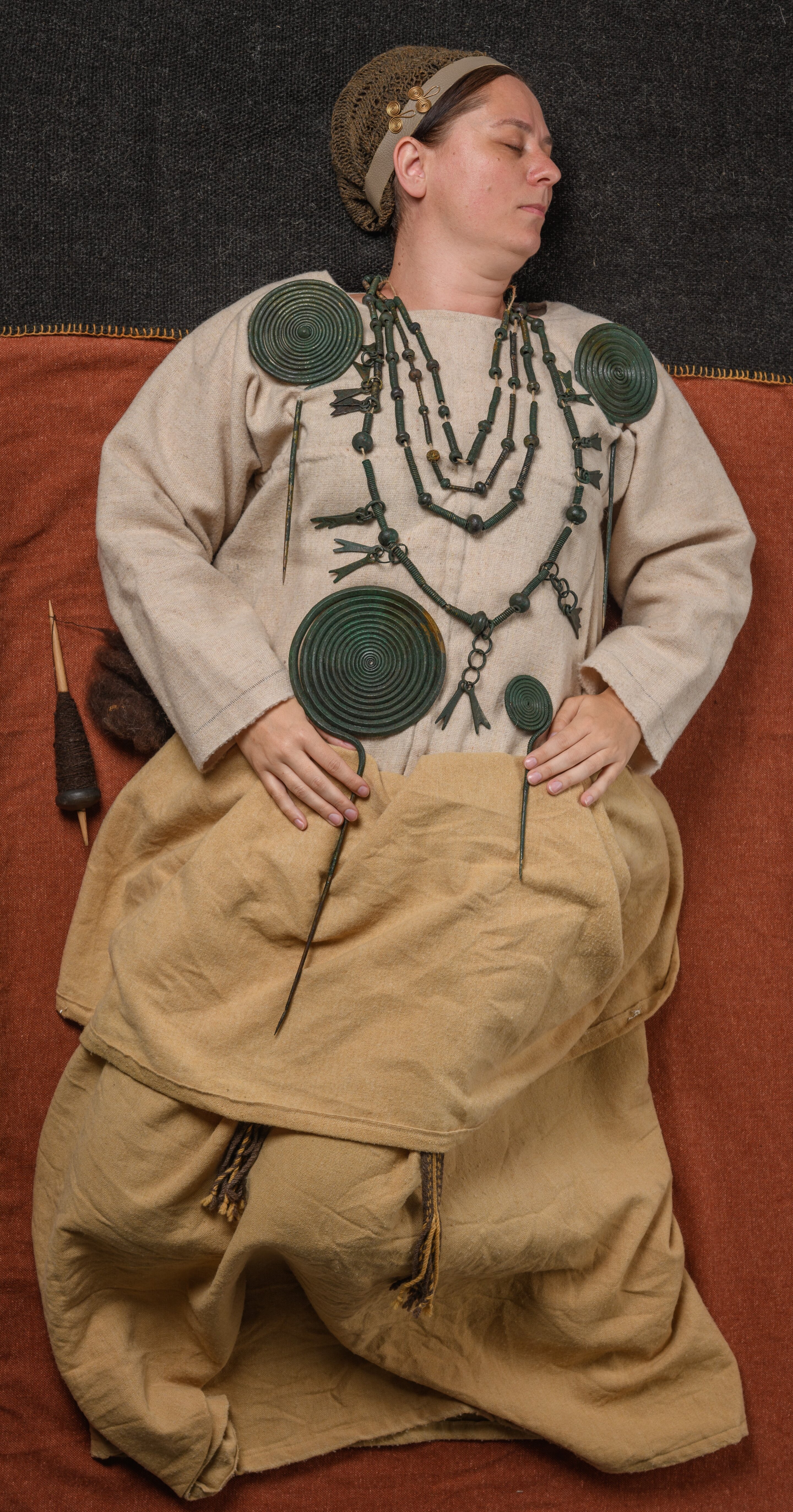
Breaking archaeological newsunfolds as the dry expanses of Papowo Biskupie, a once-lush lake site nestled in north-central Poland, yield a treasure trove of historical significance. The extensive excavation of bronze jewelrysheds light on prehistoric ritual, unraveling the mysteries surrounding a prehistoric ritual among the enigmatic Chełmno group.
Datingback to the period of 1200-450 BC, the Chełmno group emerges as a pivotal community within the northern reaches of the Lusatian culture. This archaeological phenomenon, spanning the Late Bronze to the Early Iron Age in Central Europe, takes center stage as the artifacts provide compelling evidence of ritualistic metal deposition by the region's ancient inhabitants.
Bronze Jewelry Sheds Light On Prehistoric Ritual
In a groundbreaking archaeological revelation, a team of researchers in Poland has unearthed a stunning collection of over 550 pieces of Bronze Age jewelry at the Papowo Biskupie site, shedding new light on the mysterious burial rituals of the Chełmno group. This remarkable finding challenges previous assumptions about the group's practices and reveals unexpected insights into their social and ritualistic strategies.
The dried-out lake bed site, occupied by the Chełmno group from approximately 1200 to 450 B.C., was a pivotal location within the broader Lusatian culture - a community residing in northern Europe during the Late Bronze Age and Early Iron Age. While the Lusatians were renowned for their ritual depositions of metal hoards in bodies of water, the Chełmno group was not previously associated with such practices.
The discovery of this extraordinary cache of metal jewelry, made by metal detectorists in 2023, has transformed our understanding of the Chełmno group's relationship with metal. Among the findings are a diverse array of arm and neck ornaments, along with a multistrand necklace adorned with oval and tubular beads surrounding a swallowtail-like pendant.
According to Łukasz Kowalski, a postdoctoral researcher of archaeology at the AGH University of Science and Technology of Krakow and a co-author of the study published in the journal Antiquity, "The scale of metal consumption at the site is extraordinary."This finding challenges the notion that metal played a secondary role in the social and ritual strategies of the Chełmno group, diverging from the metal-hoarding practices of their Lusatian counterparts.
The researchers noted that many of the metal artifacts were locally crafted, showcasing the community's proficiency in metalwork. However, some items, such as a bead in the necklace, were crafted using materials sourced from the Eastern Mediterranean region. Kowalski emphasized:
“„This increases the use of evidence that power-elites of the Chełmno group became parties to a metal trading network that connected much of the European continent in the 1st millennium B.C.- Łukasz Kowalski
In addition to the remarkable jewelry, the excavation also uncovered the skeletal remains of at least 33 individuals at the lake bed. Radiocarbon dating indicated that the human remains predate the metal deposition, providing further evidence of the evolving belief system within the Chełmno group.
As researchers pieced together a hypothetical model of a Chełmno woman adorned with metal jewelry, Kowalski remarked:
“„Our discovery opens a new window for exploring the social and ritual practices of the Chełmno group and reflects the complex interplay between the deposition of human remains and metal objects in wetlands.- Łukasz Kowalski
Final Thoughts
The Papowo Biskupie lake bed excavation has unearthed 550 bronze artifacts and skeletal remains dating back over 3,000 years. This significant discovery not only provides a captivating glimpse into a bygone era but also unravels the mysteries of an ancient ritual practiced by the enigmatic Chelmno group.
Occupying the period between 1200 BC to 450 BC, straddling the Late Bronze Age and the Early Iron Age, the Chelmno group emerges as a focal point in the intricate tapestry of the Lusatian culture.
While the Lusatians, widespread across Poland during this time, were renowned for their ritual depositions of metal hoards, the Chelmno group was initially perceived as an exception to this practice. However, the recent excavation, detailed in a groundbreaking Antiquity study, shatters this preconception, revealing the profound ritual significance of metal artifacts for the Chelmno group.
